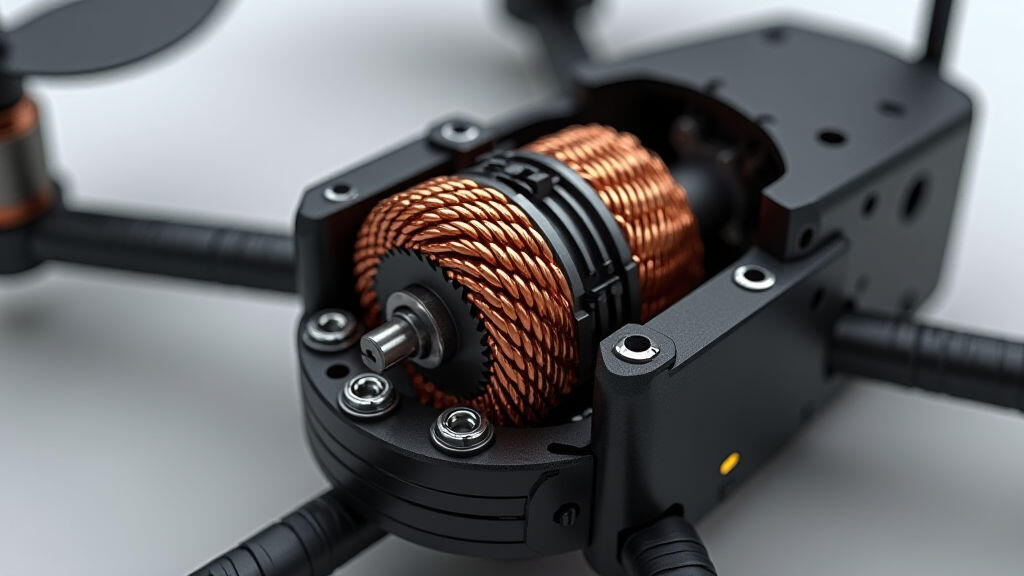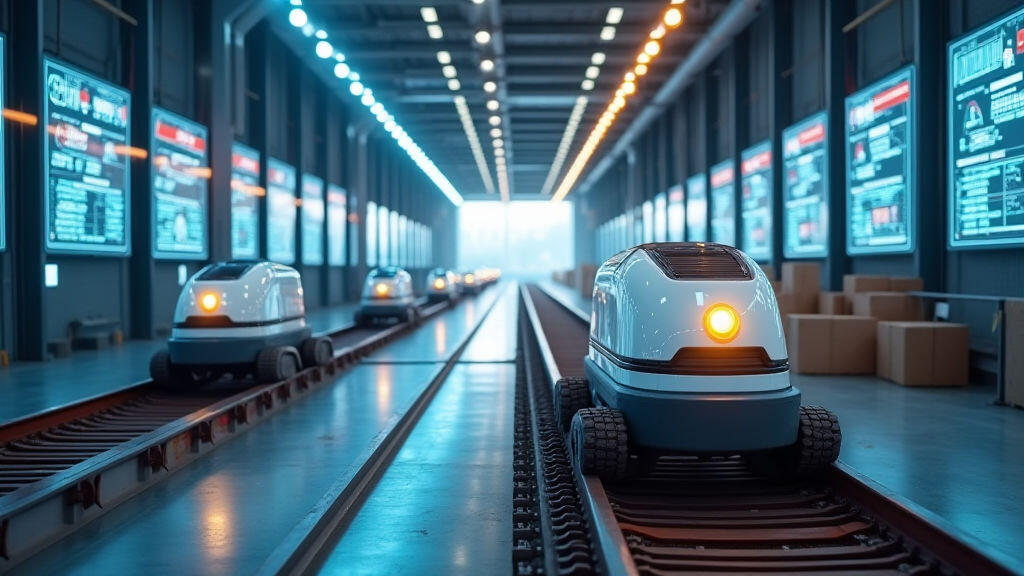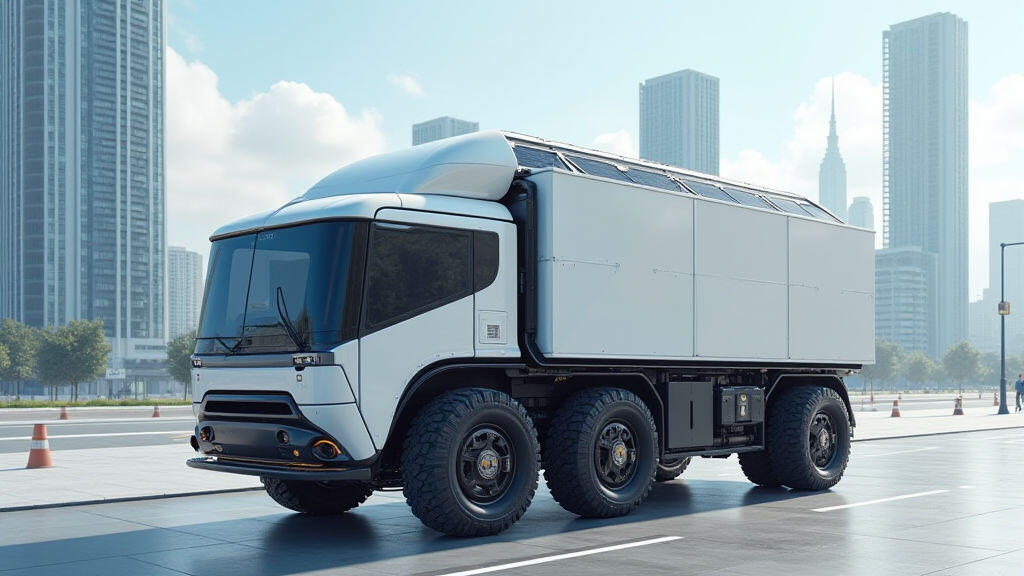Anjing Road, Xiaolan, Zhongshan, Guangdong, China
info@mes-drive.com
08.00 AM-09.00 PM

On October 12th, 2025, Amazon unveiled its Prime Air 2.0: a fleet of autonomous cargo drones that promise to zip packages from warehouses to doorsteps in fewer than 20 minutes. The launch captured headlines worldwide, sparking conversations about the future of logistics, sustainability, and the vital components that enable this revolution. At the heart of this announcement lies a family of humble yet powerful devices: gear motors, also known as reducer motors. Though often hidden inside a casing, these motors are now a linchpin in the push toward faster, greener delivery.
Prime Air’s new drones incorporate ultra‑compact electric drives that deliver precise thrust control, high torque, and energy efficiency—an unprecedented blend that would be impossible without advances in gear motor technology. We’ll examine how the trending surge in autonomous delivery demands a new class of reducers, why the market is rapidly expanding, and how this shift promises ripple effects across entire supply chains.
The core of every delivery drone is its propulsion system: a set of electric motors that spin propellers and produce lift. As drones grow larger and heavier to carry more payload, the motors must generate more torque while staying lightweight and efficient. Traditional brushless DC motors alone cannot meet these constraints, especially when they need to translate high rotational speeds into lower, more powerful output. This is where gear motors come into play.
A gear motor combines a brushless DC motor with a gearbox that delivers a higher torque output at a reduced shaft speed. In Prime Air’s design, the motor’s output shaft turns at a few hundred revolutions per minute—well below the fastest turbine speeds—yet it imparts the necessary load to swing massive rotors. The axiomatic advantage is twofold:
Amazon’s Prime Air team reportedly used a 30 kW gear motor with a 12:1 reduction ratio—an acronym for 12 turns of gear input for every 1 rotation of output—balancing power and dimension. The next generation of autonomous delivery will lean on even higher reduction ratios, coping with heavier electronics, heavier shipping containers, and tighter safety margins.

The headline-grabbing Prime Air launch merely scratches the surface. Once addressable, autonomous delivery will infiltrate a broad swath of logistics solutions—airport luggage handling, post‑delivery package sorting, and even agricultural drone spraying require motorized systems tuned for recurrent, high‑volume operation.
Key industry segments witnessing this wave:
A growing trend—reported by Gartner’s 2026 Supply Chain Vision Report—is the integration of AI‑driven route optimization with mechanical power systems. Gear motors must come pre‑installed with embedded torque‑sensing electronics, allowing software to predict maintenance, cut idle cycles, and reduce overall energy consumption.

Representative of the trend’s foundational changes, gear motors have seen a robust shift in design philosophy. Historically, gear motors prioritized robust steels and simple spur or helical gear trains. Modern electric drive systems now employ planetary gearsets, cuboidal bevel gears, and even hybrid magnetic gearboxes to significantly reduce backlash and improve efficiency.
Consider the example of Magnus Electro, a European manufacturer specializing in 100–500 kW gear motors. They pushed a pivotal milestone on September 30th, 2025, with a 300 kW motor featuring a 20:1 planetary gearbox that maintains 99.9% efficiency—essential for HVAC systems and autonomous transport platforms. Their Ba 1500 sensor technology, integrated into gear motor sleeves, provides real‑time monitoring of torque and temperature, critical for predictive maintenance in high‑availability scenarios like Prime Air’s logistics nodes.
These technological leaps align with broader sustainability mandates. The Paris Climate Accord now urges all industrial sectors to cut emissions by 30% by 2030, a figure that can be partly achieved by replacing large, inefficient gearbox assemblies with compact, electronically controlled gear motors. As predictive maintenance becomes mainstream, downtime shrinks, and so does waste—very attractive for green logisticians.
According to market research firm MarketsandMarkets, the gear motor market is projected to climb from $5.4 billion in 2025 to $8.7 billion by 2030, fueled by robotics, automation, and Electric Vehicle (EV) traction drives. Gartner’s 2026 Manufacturing Forecast highlighted a 12% year‑over‑year rise in demand for reduced torque converters suitable for autonomous systems—an emergence that, while softer than pure consumer electronics or data centers, remains a high‑impact scaling factor.
Investment flows match this trajectory. In a surprising but industry‑relevant development, Tesla’s $500 million investment in a startup called Facet Drives is now devoted to sustainably producing gear motors from recycled aluminum and high‑strength polymers—showing that even high‑power drivetrain developers care deeply about the motor’s core technology.
While Prime Air’s drones show a proof‑of‑concept, the chemical reality lies in scaling these systems into fully autonomous, high‑availability networks. To do so, gear motors must bite further into autonomy‑centric circles: simultaneous high‑speed actuation combined with micro‑tuning capability for specific payloads. Poly‑functional motors that combine brakes and reduction ratios are already being prototyped for urban micro‑delivery—small, solar‑powered, drone‑less charge‑drop models that use gear motors to shoot payloads via water‑inflated pods to rooftop lockers.
Furthermore, gear motors are the missing link between hybrid energy storage solutions—such as lithium‑sulfur batteries with high discharge rates—and efficient mechanical usage. Projects like the National Renewable Energy Laboratory’s (NREL) “Hybrid Flow Drive” envision using gear motors to transduce chemical output into mechanical work at average efficiencies of 97%‑98%. This synergy would be a game‑changer across the logistics, maritime, and energy sectors.

The rising narrative of autonomous delivery is a kind of tech fable: bitten by the digital revolution, it looks at its eyes-next door, and smart electronics twisted in an invisible gear drive system do most of the heavy lifting. Prime Air, Amazon’s bold leap into drone logistics, accentuates how gear motors—compact but mighty—are essential for this leap. When a company can embed a powerful yet lightweight gear motor into its platform, it can scale up payloads, increase flight times, and drastically cut energy consumption—all of which are prerequisites for genuine sustainability in a carbon‑constrained world.
Looking ahead, the market for gear motors will persistily grow as autonomous logistics evolves. Manufacturers that can deliver high‑torque, echon‑efficient motors with embedded intelligence will stand at the forefront of the new industrial wave. For them, gear motors will no longer be a backdrop component; they will be an integral, highly visible part of the product story—powering the future of efficient, green logistics, one spindle at a time.
Leave A Reply
Your email address will not be published. Required fiels are marked